|
|
 |
In this series, I will not repeat the information that is already available on how superchargers work, but instead focus on their selection, installation, use and tuning on older engines. Here I will make various observations and comments on function, and in some cases how to make improvements. New material will be added regularly, and eventually better organized. Click below to jump directly to an individual topic. |
Supercharger Topics |
|
|
|
|
|
|
Function |
|
|
|
|
|
Supercharger Design Choices |
Rather than make a list of all possible choices, these are some of the most common supercharger types, manufacturers, and models. Many are no longer produced but can be found on eBay etc. Click the link button for specific comments, then click the thumbnail for a larger view. Click for information on types not listed:  . . |
Positive Displacement Type, Twin Rotor |
Link |
Mfg. | Rotation |
Size, L |
Ratio |
Max RPM |

|
B&M (Roots copy) | |
|
.75:1-1.5:1 |
|

|
Camden |
| |
1:1-1.25:1? |
|

|
Chinn |
| |
1:1-1.25:1? |
|

|
Eaton (Magnuson, Endyn, JRC &c.) | CW |
.40-2.00 |
1:1-4:1 |
12-15K |

|
Fageol | CW |
.55-1.15 |
|
3.6-12.5K |

|
Holley Pro-Charger (Roots copy) | |
|
.75:1-1.5:1 |
|

|
Italmeccanica (S.Co.T., &c.) | |
|
1:1-1.25:1? |
|

|
M.A.G. (Motosacoche, MAG) | |
|
1:1-1.25:1? |
|

|
Magnum Powers (Eaton replacement case) | |
|
2:1-3:1? |
|

|
Magnuson (Magnacharger) | |
|
1:1-1.25:1? |
|

|
Marshall | |
|
1:1-1.25:1? |
|

|
Moss | |
|
1:1-1.25:1? |
|

|
Nordec (Marshall-Nordec, Godfrey-Nordec) | |
|
1:1-1.25:1? |
|

|
Ogura | |
|
2:1-3:1 |
|

|
Pepco (PEPCO, Fageol) | |
|
1:1-1.25:1? |
|

|
Roots (BDS, Dyer, GMC, Hampton, Littlefield) | |
|
.75:1-1.5:1 |
|

|
S.Co.T. (Italmeccanica, &c.) | |
|
1:1-1.25:1? |
|

|
Wade | |
|
1:1-1.25:1? |
|

|
Weiand (Roots copy) | |
|
.75:1-1.5:1 |
|

|
Volumex | |
|
1:1-1.25:1? |
|
Positive Displacement Type, Twin Screw |
Link |
Mfg. | Rotation |
Size, L |
Ratio |
Max RPM |

|
Opcon Autorotor (SRM AB) | CW |
.32-* |
2:1-4:1 |
|
Positive Displacement Type, Eccentric Vane |
Link |
Mfg. | Rotation |
Size, L |
Ratio |
Max RPM |

|
Arnott | CW |
.525-.825 |
1:1 |
|

|
Centric | |
|
|
4,500 |

|
Cozette | |
|
|
|

|
G-Lader | |
|
|
|

|
Judson (Wray is similar) | |
|
|
|

|
Shorrock | |
|
.8:1-1.2:1 |
|

|
Zoller | |
|
|
|
Centrifugal Type |
Link |
Mfg. | Rotation |
Size, L |
Ratio |
Max RPM |

|
Rotrex | CW |
|
2:1-3:1 |
200,000 |

|
McCullough | |
|
|
|

|
Paxton | |
|
|
|
Positive Displacement Superchargers |
This group, including twin rotor, twin screw, and eccentric vane types, mechanically captures a small volume of intake charge between two components and forces it into another state. Absent leakage, the transfer and compression are very efficient except for an increase in temperature proportionate to the boost. Some types are true superchargers where there is internal charge compression, and some are better described as blowers where the compression only takes place in the manifold. Higher boost rates increase the discharge temperature, which produces less effective power for the amount of boost.
In general, positive displacement superchargers produce boost in direct proportion to their displacement per revolution (how much intake charge is captured by each rotation), and their rotational speed (except for leakage). E.g., a positive displacement supercharger turning at 10,000 RPM will produce twice as much boost pressure as the same unit turning at 5,000 RPM. This is most effective at producing power beginning at low engine speeds.
The drive ratio between the engine and this supercharger type varies between slightly under-driven (1:.75) and highly over-driven (1:4), depending on the exact model and application, and always limited by the manufacturer’s maximum RPM limit.
|
Positive Displacement, Twin Rotor |
Generically known as “roots type”, these superchargers have two parallel intermeshed rotors turning in opposite directions. The rotors are radially and laterally symmetrical, and identical (except for the drive ends). The rotor-to-
rotor clearance is just sufficient to prevent contact. The rotor’s two or more lobes which may be straight or partially rotated (helix), and are generally driven by counter-rotating gears inside the front housing.
|
 | |
The charge is not compressed except by the resistance (if any) in the intake manifold, therefore in the strictest sense these are not true superchargers but blowers. The drive ratio between the engine and this supercharger type varies between slightly under-driven (1:.75) and somewhat over-driven (1:1.5), depending on the exact model and application (except as noted), and always limited by the manufacturer’s maximum RPM limit. |
The intake charge enters the housing on one side of the rotors (the top, as shown above), splits into two streams each of which is captured between a rotor lobe and the housing’s inner surface, passes around the outside of the rotors and is forced into the discharge side of the housing 180° away (the bottom, as shown above). The charge does not flow between the lobes. Although the lobes are inverse shapes (each convex lobe matches the |
 | |
concavity on the opposing rotor) no charge passes between the rotors; the rotors nearly mesh except for clearance as they pass by each other only to prevent back-flow from the discharge port. No work or pumping occurs between the two mating lobes. The working area is the volume between two sequential lobes on the same rotor and the case inner wall, and it's only moved (but not compressed).
The “capacity” of a twin rotor supercharger is the volume of air (or mixture) that passes through the case in a single revolution of the lobes. This can be roughly measured as the irregular cross-sectional area between two adjacent lobes and the inner case wall × the number of lobes × the length of the rotor. The relevant area is shown here in red, right above; click the picture for a larger view. This is generally given in cubic inches, litres or cubic centimeters (source: Harry Pyle). |
B&M |
These are miniature GMC variants with 3-lobe straight rotors made in 144” (2,360cc), 162” (2,655cc) and even larger capacities. They are all the same case diameter, with the extra capacity from longer rotors. For more B&M information:  . . |
 | |
Camden |
For more Camden information:  . .
|  | |
Chinn |
Derek Chinn manufactures superchargers with capacities between 900cc and 3500cc per revolution. For more Chinn information:  . .
|  | |
Eaton
Click here for extensive notes on Eaton superchargers:  . . |
Fageol |
Supplies four sizes of superchargers 33.5, 48.3, 63.2 and 70.6” per revolution. These can cover 4 cycle engines from a .5 to 3 litre displacement. For more Fageol information:  . .
|  | |
Italmeccanica |
Also known as SCOT, S.C.O.T., S.Co.T., Supercharger Company of Turin, and I. T. Supercharger. This is similar to the Wade product and produced under a Wade license. For more Italmeccanica information:  . .
|  | |
M.A.G. |
This was a high quality unit by Motosacoche S.A. in Switzerland. Also known as MAG. For more M.A.G. information:  . .
|  | |
Magnum Powers |
This is a partial Eaton reproduction using the original Eaton rotors with a new case for improved porting (“Magnaport”). For more Magnum Powers information:  . .
|  | |
Magnuson |
Also known as “Magnacharger. For more Magnuson information:  . .
|  |
Marshall |
The Marshall “cabin blower” was originally installed on light aircraft to compensate cabin air for high altitude. The most commonly used model (J75) has a displacement of about 36” (600cc) per revolution. For more Marshall information:  . . |  | |
Moss |
This is a modern replica of the Marshall for smaller sports car engines. Moss also currently supplies what appears to be an Eaton for larger engines. For more Moss information:  . . |  | |
Nordec (a.k.a. Marshall-Nordec, Godfrey-Nordec) |
This was an automotive installation using the Marshall cabin blower as the core component, and was made by North Downs Engineering Company Ltd. For more Nordec information:  . . |  | |
Ogura |
This is original equipment on the Volvo Penta. For Ogura information:  . .
Ogura supercharger data |
Displacement per revolution, Liters | .410 | .730 | .960 | 1.160 | 1.460 | 2.060 |
Displacement per revolution, Cubic Inches | 25 | 45 | 59 | 71 | 89 | 126 |
Sustained RPM | 12,000 | 11,000 | 10,000 | 9,000 |
Instantaneous RPM | 15,000 | 14,000 | 13,000 |
|
 | |
|
|
Pepco |
Progressive Engine Products Company, Inc. made superchargers for VW from around 1950. Fageol sold them. Crofton took over from them about 1959. There were two case sizes, 4” and 6” lengths with remaining dimensions in common. For more Pepco information:  . . |  | |
Wade |
This was available in two sizes. The RO20 is 2000cc displacement per revolution for engines from 2,000 to 3,000cc for between 5-8.0 psi boost. Two drive ratios were used 0.8:1 and 1:1 depending on the power required. An RO20 supercharger |  | |
fitted to a 1300cc engine with a drive ratio of 1:1.0 will supply a maximum boost of up to 18 psi. The RO20 weighs 40 lbs. The maximum rotor speed is 6,500 RPM; for continuous use 6,000 RPM. The RO34 is a longer RO20, with displacement per revolution of 3400cc for engines from 3,000 to 5,000cc at 6,000 and 5,500 RPM. Wade information:  . . |
Weiand |
This is available in six sizes as shown. For more Weiand information:  . .
Pro-Street 142 |
Pro-Street 177 |
Pro-Street 250 |
Weiand 6-71 |
Weiand 8-71 |
142” |
177” |
250” |
411” |
436” | |
 | |
|
Volumex |
For more Volumex information:  . .
|  | |
Positive Displacement, Twin Screw | These superchargers (like the twin rotor types) have two rotors turning in opposite directions. The rotors are multi-lobed helix, and are generally driven by counter-rotating gears in the front housing. Each rotor is radially symmetrical, but laterally asymmetrical. |  | |
These are true superchargers. The Whipple male rotor has three lobes, the female five lobes as shown, right. The Kenne-Bell male rotor has four lobes, the female six lobes. Females in some earlier designs had four. The rotors do not interlock (as found in older Roots type superchargers).
The working area is the inter-lobe volume between the male and female rotors. It’s larger at the intake end, and decreases along the length of the rotors until the exhaust port. This change in volume is the compression. The intake charge is drawn in at the end of the rotors in the large clearance between the male and female lobes. At the intake end the male lobe is much smaller than its female counterpart, but the relative sizes reverse proportions along the lengths of both rotors (the male becomes larger and the female smaller) until (tangential to the discharge port) the clearance space between each pair of lobes is much smaller. This reduction in volume causes compression of the charge before being presented to the intake manifold.
The overdrive ratio between the engine and this supercharger type varies between 1:2 and 1:4, depending on the exact model and application, and always limited by the manufacturer’s maximum RPM limit.
The “capacity” of a twin screw supercharger is the volume of air (or mixture) captured between the male and female lobes in a single revolution. The lobes are inverse shapes (each convex lobe “fills” less than the concavity of the opposing rotor), and as the eccentricity of each lobe decays towards the discharge end the charge is compressed by this area reduction. This is generally given in cubic inches, litres or cubic centimeters (after Harry Pyle).
The rotors must turn in the correct rotation, but which direction the drive turns can be modifed by simply driving the other rotor (male, shown right in the above picture) in the opposite direction. However, this reduces the pumping capacity per revolution since the female rotor (shown left in the above picture) has more lobes; the new capacity is the proportion of male to female lobes: 4:5 (80%), 4:6 (66.7%), 3:5 (60%), etc. |
Opcon Autorotor |
This is the oldest true compressor, also known as an “axial flow” compressor, developed by Svenska Rotor Maskiner (SRM) in 1936. Alf Lysholm was the design engineer. It reduces the volume of the intake charge internally. Manufactured |  | |
under license by IHI for Mazda, and for Sprintex, PSI, Whipple, &c. For more Opcon Autorotor supercharger information:  . . |
Positive Displacement, Eccentric Vane |
A rotating central drum or cylinder with sliding moveable vanes mounted to its exterior circumference draws in the charge. The drum is located eccentrically in the housing and rotates off-center, with the largest clearance between the drum and housing at the inlet port. Each vane in turn slides to assume the contracting and expanding radial distance between these surfaces to close off the space. The clearance decreases in size as the drum rotates, compressing the charge to a smaller volume and higher pressure until the vane reaches the discharge port, where the charge exits. These are true superchargers, where the charge is compressed before being discharged into the intake manifold.
The degree of internal compression is a function of the final volume between the drum and housing ÷ the initial volume, and is therefore limited by the design of the supercharger, not its speed (although leakage is a smaller percentage of the total volume and pressure as speed rises, of course).
The internal compression ratio is roughly proportionate to the change in distance between the drum OD at the vane’s farthest and closest points from the inner wall of the housing. Example only: if the distance from the drum to the wall is 4” at the farthest point and 2” at the closest the compression ratio is roughly 2:1, &tc.
If the supercharger’s output capacity is larger than the engine can accept, additional compression will occur in the intake manifold. If the supercharger is not sufficient to supply the engine, the charge will expand into the intake manifold and pressure will drop. The output capacity can be altered within reasonable limits by changing the drive speed of the supercharger.
The drive ratio between the engine and this supercharger type typically varies between slightly under-driven (1:.75) and slightly over-driven (1:1.5), depending on the exact model and application, and always limited by the manufacturer’s maximum RPM limit.
The “capacity” of an eccentric vane supercharger is the volume of air (or mixture) in the three-dimensional space circumscribed by two non-concentric circles (the central drum and the housing ID) where its height is the distance between the drum and housin at the point of entry, its length is the arc distance between two consecutive vanes, and its width equal to that of a vane, × the number of vanes on the drum. This is generally given in cubic inches, litres or cubic centimeters (after Harry Pyle).
|
Arnott |
This was manufactured for sports car engines such as the M.G. TD, &c. by Carburettors Ltd. It had its own external oil supply, pressurized by boost. Two sizes were supplied, Model 1600 (525cc) and Model 166 (825cc) per revolution. For more Arnott information:   . . |  | |
Centric |
The Centric supercharger is the main limiting factor as it was originally designed to run at about 4,500 RPM and being driven at engine speed is doubling its designed performance. Designed by Shorrock before WW2. The vanes ride on trunnions to |  | |
prevent them from contacting the housing surface, which permits a certain degree of air leakage but reduces wear and operating temperatures. For more Centric information:  . . |
Cozette |
This is a pre-WW2 item used on smaller British and European sports cars, now obsolete. Some had vertical drives. The vanes ride on trunnions to prevent them from contacting the housing surface, which permits a certain degree of air leakage but reduces wear and operating temperatures. For more Cozette information:  . . |  | |
G-Lader |
This type is only used by VW GmbH, and is similar in appearance to both the eccentric vane and centrifugal types. The single rotor and housing have spiral walls that intermesh to provide a maze-like air passage.
The rotor oscillates on an eccentric shaft and the |  | |
constantly changing internal volume between the spiral walls provides a pumping effect. Air enters at the periphery of the spiral walls and is exhausted near the central axis. There are two models, G40 and G60; I’m going to guess that rather than being arbitrary numbers they are based on the capacity in liters: 400cc and 600cc. For more G-Lader information:  . . |
Judson |
Judson superchargers were sold for installation on VW, Corvair, MG, Triumph sports cars, etc. Judson (and Wray) vanes seal by contact to the housing inner surface, and consequently have higher efficiency but also higher operating temper- |  | |
atures, both for the unit itself and also the discharge. For more Judson information:  . . |
Shorrock |
This is one of the oldest and most common. It was available in several sizes, and three port orientations. the inlet and outlet ports are side by side and the charge flows through the casing in a horseshoe path. One of the ports can be seen at the top with |  | |
four mounting studs. There was a straight through i.e. 180° model and, rarest of all, a 90° version. The vanes ride on trunnions to prevent them from contacting the housing surface, which permits a certain degree of air leakage but reduces wear and operating temperatures. These are generally driven at approximately engine speed, therefore must be sized closely to match engine displacement. For more Shorrock information:  , ,  .
Shorrock supercharger sizes, in displacement per revolution: .
Shorrock supercharger sizes, in displacement per revolution: |
Shorrock Superchargers |
Model number | C75 | C142 | C250 |
Displacement per revolution, cubic centimeters | 750 | 1420 | 2500 |
Displacement per revolution, cubic inches | 46 | 87 | 153 |
Maximum RPM | 7,000 | 6,000 | 5,000 |
Zoller |
This is a pre-WW2 item used on British and European sports cars, as well as the 1939 AJS V4, now obsolete. It was chain-driven in some applications. For more Zoller information:  . . |  | |
Centrifugal Superchargers |
This type has a different flow path than positive displacement types. Charge air enters at the center of the compressor’s axis of rotation, flows radially into the vanes, and is discharged tangentially. In general, centrifugal superchargers produce boost in direct proportion to their displacement per revolution, and the square of their rotational speed (except for leakage). |  | |
E.g., a centrifugal supercharger turning at 10,000 RPM will produce four times as much boost as the same unit turning at 5,000 RPM. Higher boost rates increase the discharge temperature, which produces less effective power for the amount of boost. Consequently, the drive ratio between the engine and this super-charger type is always a very high number, as much as 20:1, and always limited by the manufacturer’s maximum RPM limit.
A turbocharger is a centrifugal supercharger driven by exhaust gas pressure, rather than mechanically. Some smaller turbo compressors can be adapted to use belt or chain drive.
The “capacity” of a centrifugal supercharger is the volume of air (or mixture) that passes through the case in a single revolution of the lobes, generally given in cubic inches, litres or cubic centimeters (after Harry Pyle). |
McCullough |
Manufactured by Robert Paxton McCullough. These are the more complex and expensive variable drive ratio versions of the Paxton, where the blower speed is increased by a driver-controlled solenoid that moved the belt |
 | |
pulleys like a derailleur. It was original equipment on some Ford, Studebaker and Packard automobiles. For more McCullough information:  . . |
Paxton |
Manufactured by Robert Paxton McCullough. It has a less expensive and more durable fixed internal spring-loaded ball drive than the similar McCullough. It was known generically as the SN60. This may still be found used, but is not the same product as sold |
 |
|
currently. For more information on original Paxtons:  . For current Paxtons: . For current Paxtons:  . .
|
Variable speed drive
No variable speed drive for centrifugal superchargers is available, but one could be made with considerable trouble and expense.
Start with a professional after-market junior dragster or snowmobile centrifugal belt primary drive, and reverse it, with the snowmobile’s engine pulley on the blower shaft and the snowmobile’s clutch drive pulley on the engine. Obviously, changes in pulley size will be needed for engine speed, blower capacity, &c. |
 |
|
Now the blower pulley “free-wheels” (the belt turns, but the blower drive does not engage) until the desired “kick-in speed” is reached (which can be adjusted by springs and weights), then the blower speed is kept within a narrow range by a variable pulley as engine RPM increases. The result is a fairly flat torque curve, and any peak boost you want, but the product itself is about $1K and the engineering begins when you open the box. Shown here is a junior dragster product, click for a larger view, and click here for their website:  . . |
See these Victory Library booklets |
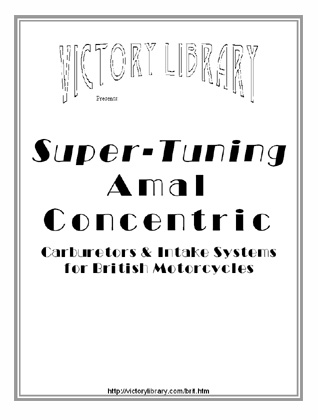
|

|

|

|
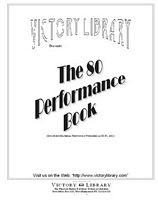
|
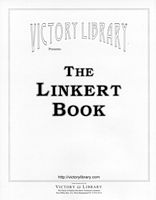
|
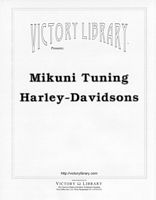
|

|

|

|
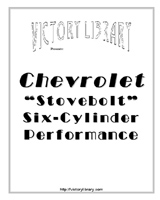
|
|



